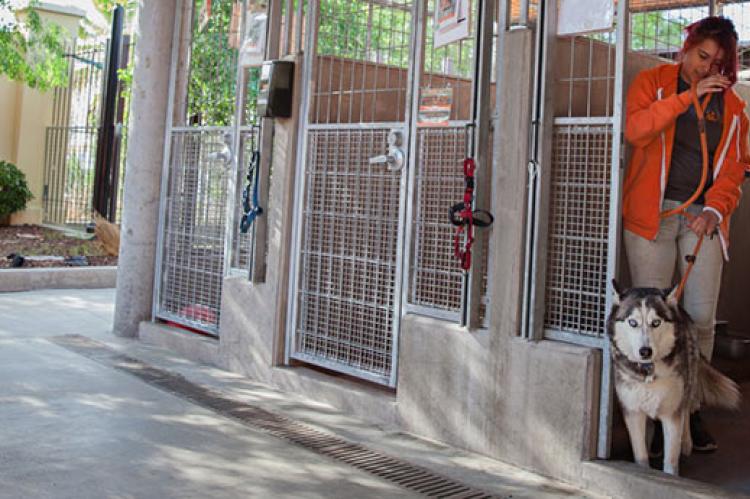How to Teach a Dog to Wait at the Door

Teaching a dog to wait at open doors can be an incredibly useful skill. Not only can it allow you and others to pass through the door without a dog underfoot or jumping on people, but it also can protect your dog from potentially bolting out the door and into an unsafe situation. The goal for this dog training plan is that the dog won’t move through the door until their handler gives a release cue. The dog can change positions as they wait at the door — e.g., go from sitting to standing or lying down to sitting — but they should not move forward toward the door until they get their release cue.
How to get your dog to wait at the door
Follow these steps to teach your dog to wait at doors.
- With the dog on leash, open the door a crack — just wide enough so the dog cannot fully stick their nose through. If the dog immediately tries to move forward through the door, close it quickly, but be careful not to close the door on the dog’s nose.
- Repeat this until you open the door and your dog pauses, even if it is only for a second. When they pause give the cue “free,” and then proceed through the door.
- Continue to do this, starting with the door ajar and working up to the door being completely open. With each progression, make sure you are waiting for the dog to not move at all when opening the door before moving on to a wider gap.
You can also use a crate to train a dog to wait. With the dog inside the crate, use the same technique described above: Open the crate door a small amount very briefly. If the dog immediately starts to move toward the door, close it quickly. Then, gradually increase the opening and duration.
Proofing the 'wait' dog training cue
Proofing in dog training means practicing a behavior in different situations with various distractions and different people acting as the handler giving the cue. In small steps, increase the amount of time your dog waits at the open door without moving through. Also, practice at different locations with different types of doors. Add distractions to your training sessions. For example, hold up a toy, raise your arms, or knock softly on a wall while practicing “wait at the door.” Then, slowly increase the intensity of each distraction.
Introduce only one proofing parameter at a time. And when you add something new, reduce the width of the door opening and the time that it’s open. Then, in small steps, work back up to opening the door all the way while incorporating the distraction, longer duration, new location, or new handler.
If you get stuck on any step, stop and take a break. When you try again, go back to the previous step in the plan. Go at your dog’s speed, so the process is a fun, relationship-building experience for the both of you.